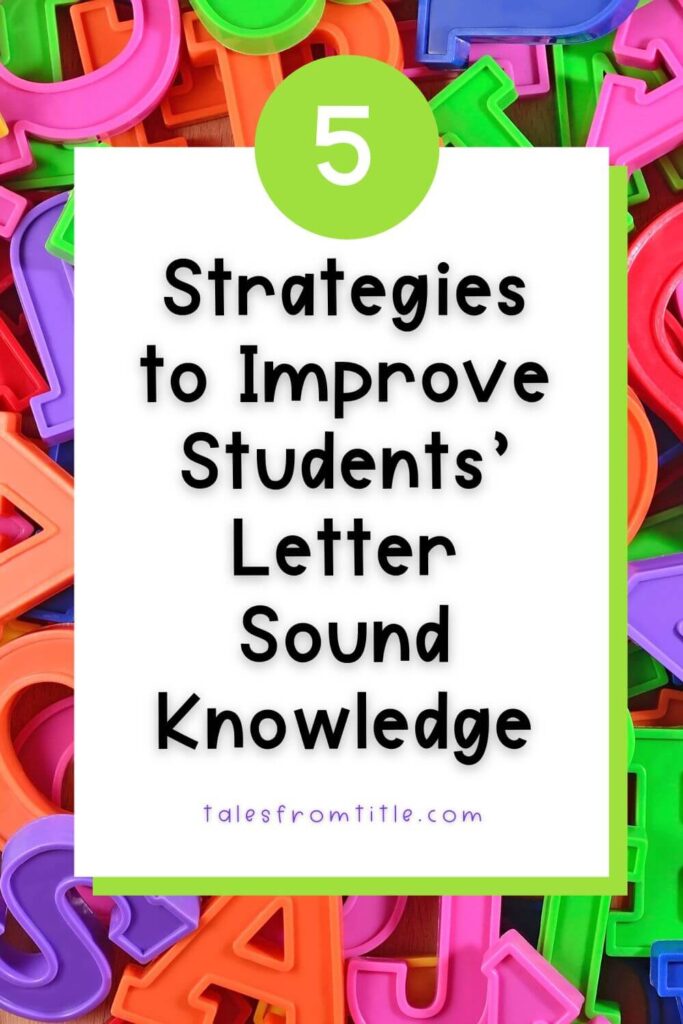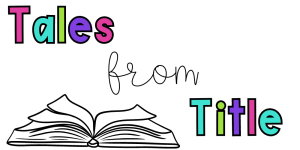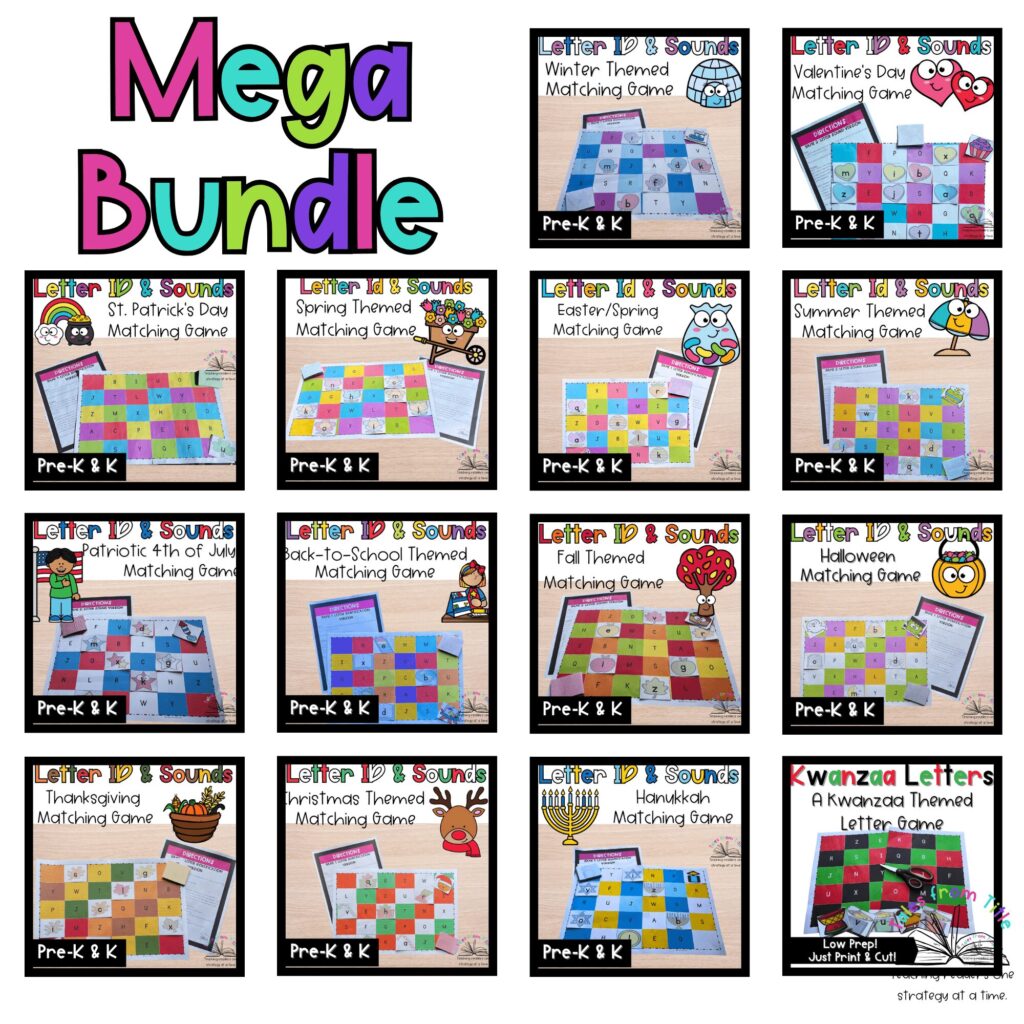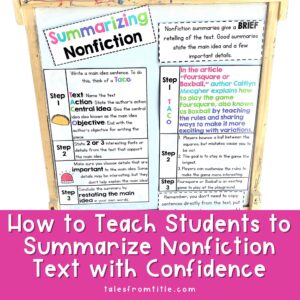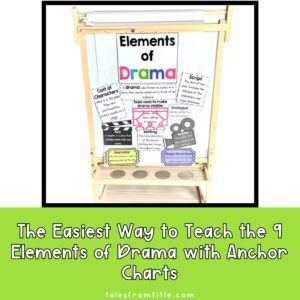In my last blog post, we looked at one of the four components of learning letters: letter naming. Today, we’re focusing on another critical piece—letter sound knowledge. If you’re working with early readers or striving to support students during intervention, these five strategies will help you guide your students to build a strong foundation in phonics.
Whether you’re a seasoned teacher or just beginning your journey in literacy instruction, these practical, classroom-tested tips will equip you to foster confidence, engagement, and growth in your young readers.
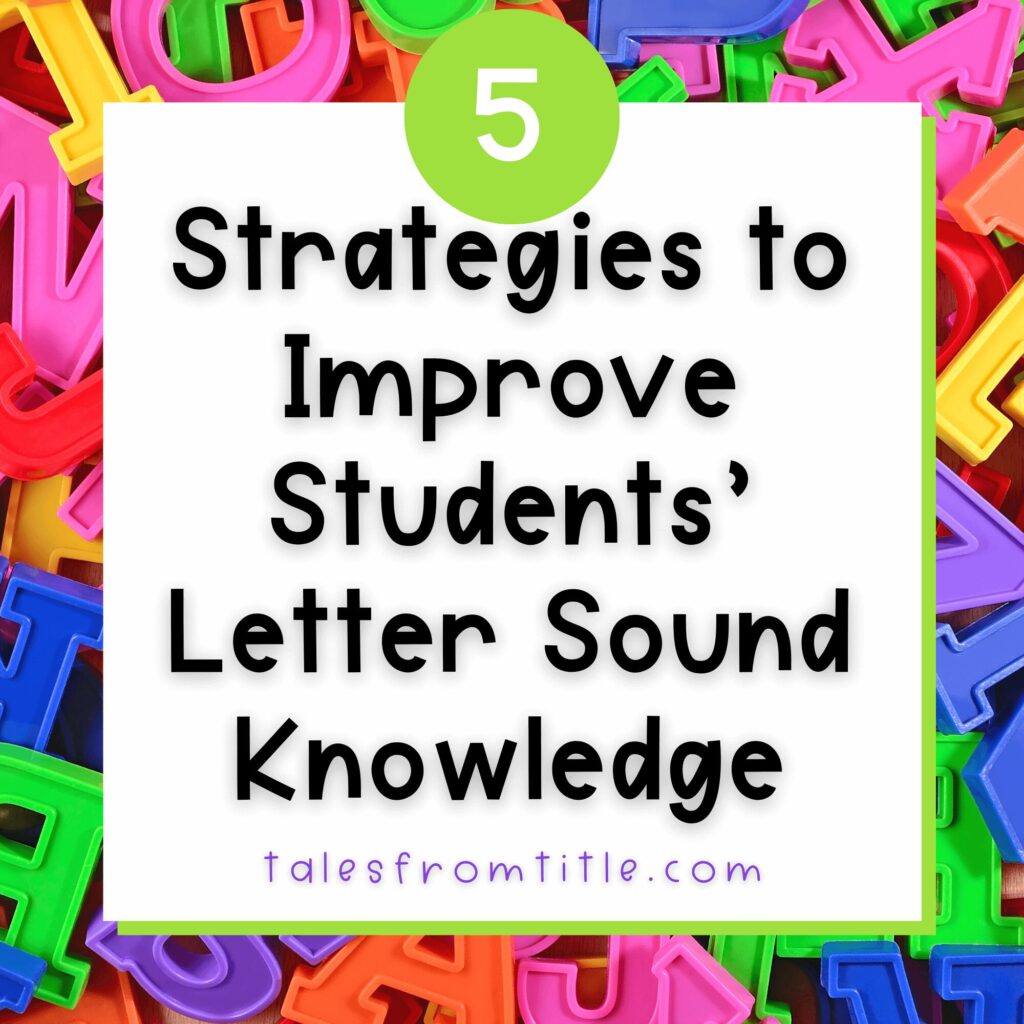
Introduce Phonics with Flair
Let’s face it: phonics instruction gets a bad rap for being repetitive and, frankly, a little boring. But it doesn’t have to be.
When I first started working with small groups, I quickly realized that if I wasn’t excited about the lesson, my students wouldn’t be either. I remember one morning when my group of kindergartners came in dragging their feet. Instead of warming up with flashcards, I turned on a Jack Hartmann song and everything changed. Suddenly, they were singing, dancing, and shouting out the letter sounds. It was like flipping a switch!
Bring that energy into your lessons with interactive games, silly songs, and visual aids. Even something as simple as using seasonal or holiday-themed letter games can breathe life into your phonics instruction. After that, I kept seasonal letter sound games in my kindergarten intervention bucket at all times. They became my go-to on days when my usual plan needed a boost. From Halloween bats to spring butterflies, there’s something about a themed game that lights up a child’s face.
Incorporate Student Interests
If you’ve ever had a reluctant learner suddenly light up during a lesson, you know the power of tapping into student interests.
I once worked with a kindergartner who could not have been less interested in phonics… until we started using words from his world. Instead of the standard “A is for apple,” we tried “A is for ATV.” D became “doe,” Q became “quail,” and C? “Cow,” of course. His face would light up with every letter, and suddenly he couldn’t wait to come practice letters and sounds.
Using custom keywords that align with what your students care about helps them form stronger associations and keeps them engaged. You can even find alphabet books that cater to different themes. My own kids have an ABC Car Book because their dad loves anything on wheels. The possibilities are endless—and the payoff is big.
Tip: Let students help choose the words! Giving them ownership adds an extra layer of buy-in. Plus, it doesn’t have to take long. A quick Google image search, copy, past, and you are ready to print and use your custom alphabet flashcards.
Reinforce with Repetition
When it comes to mastering letter sounds, repetition isn’t just helpful—it’s essential.
One thing I’ve learned is that repetition doesn’t mean you have to do the same activity over and over. Instead, mix up how you repeat skills. One week, we’d play a memory game with picture and sound cards. The next, we might do a quick “grab and say” game with letter tiles or sort magnetic letters by sound.
I once had a group of students who loved pretending to be teachers. So, every Friday, they’d “teach” the class a few letter sounds using flashcards and funny voices. They thought they were playing I knew they were reviewing.
Think about routines, not ruts. Embed repetition into your daily schedule with short, frequent bursts of practice that feel like play.
Make it Meaningful
Letter sounds aren’t just something we memorize and move on from, they help us understand the world.
I remember taking a walk around the school building with a small group of students. I handed them clipboards and asked them to find letters and sounds they recognized on signs, posters, and even the vending machine. One student proudly pointed to the word “juice” and said, “J says /j/!” In that moment I knew she was making the connection between what we practiced in the classroom and what she saw in real life.
Make it a point to draw attention to letter sounds in books, labels, anchor charts, and even snack packaging. Ask students to hunt for letters in their names or in the classroom. When students begin to see letter sounds as tools they can use beyond the page, their motivation skyrockets.
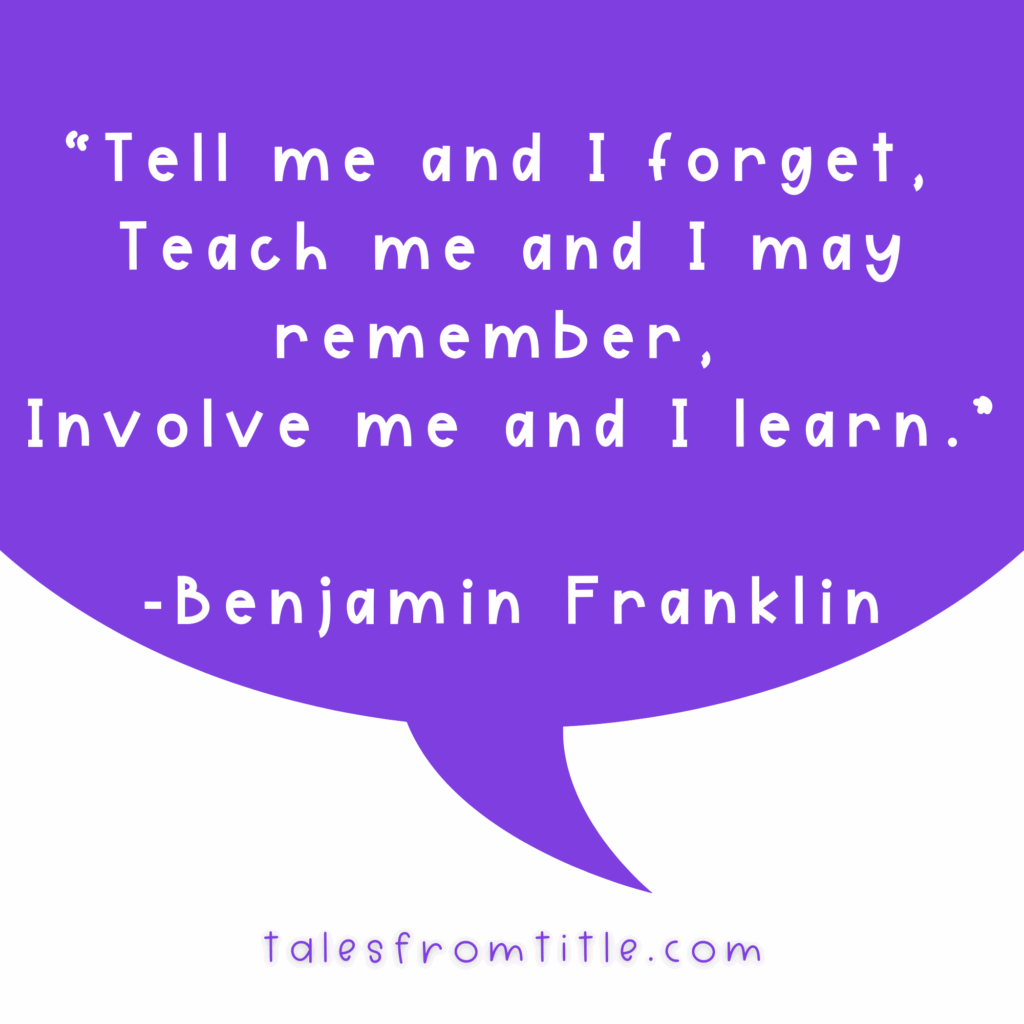
Celebrate Successes
When students feel successful, they lean into learning.
I once had a student who struggled with letter sounds for months. One day, during a review game, she correctly identified five sounds in a row. Her face lit up, and the entire group clapped for her. That moment became a turning point; her confidence soared, and so did her progress.
Recognize progress, no matter how small. A sticker chart, a note home, a “Sound Superstar” wall—whatever works for your group. Let students know that every step forward matters.
You can even create individual sound tracking sheets so students can see their own growth. That visual progress can be incredibly powerful for learners who need encouragement along the way.
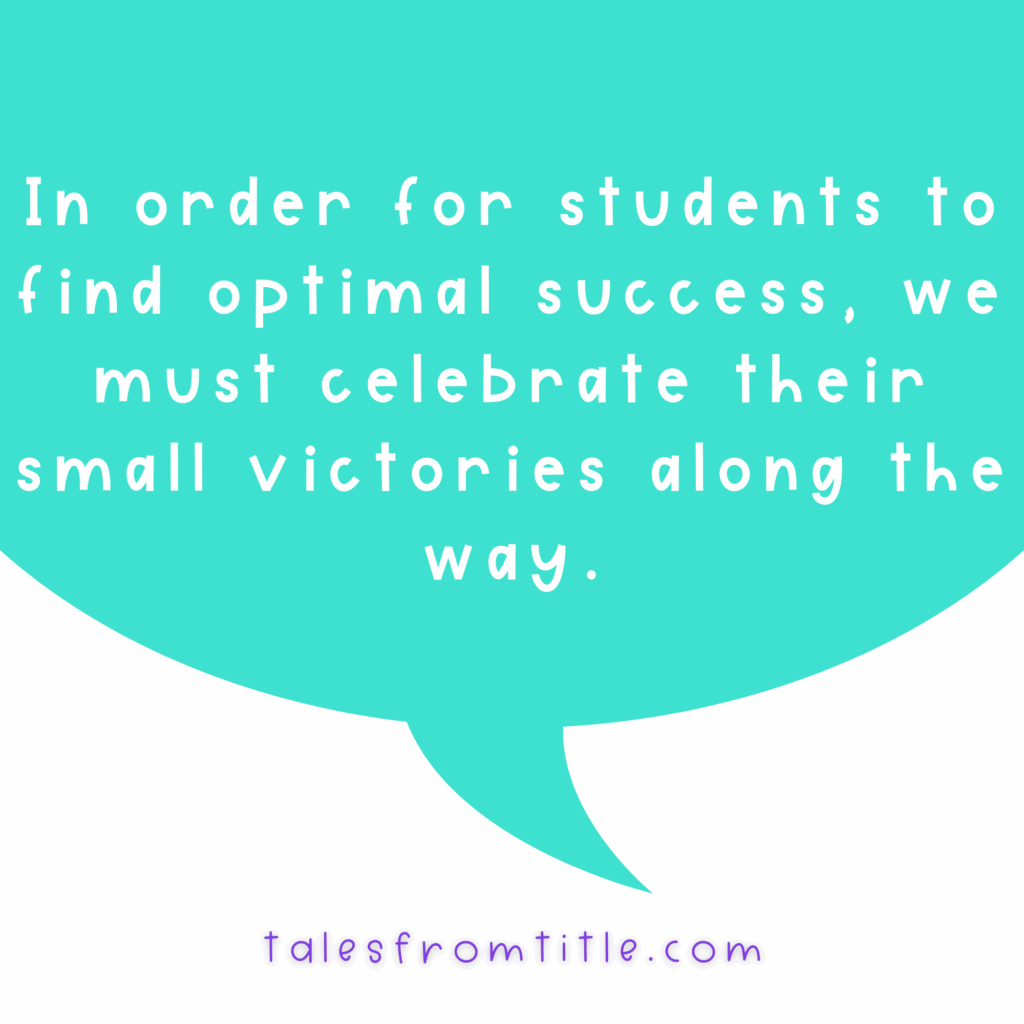
Helping students master letter sound knowledge is about more than just memorizing sounds—it’s about sparking joy, building connections, and creating lasting confidence. By teaching phonics with flair, incorporating student interests, strategic repetition, connecting learning to the real world, and celebrating every win, you create an environment where young readers thrive.
Try one or two of these strategies this week, and watch your students come alive with confidence. Have a favorite story or tip of your own? I’d love to hear it! Drop a comment or send me a message!
Want even more support and ideas for your classroom?
When you sign up for my email list, you’ll get exclusive access to my free resource library filled with printable tools, engaging activities, and time-saving materials designed to support you and your students.
